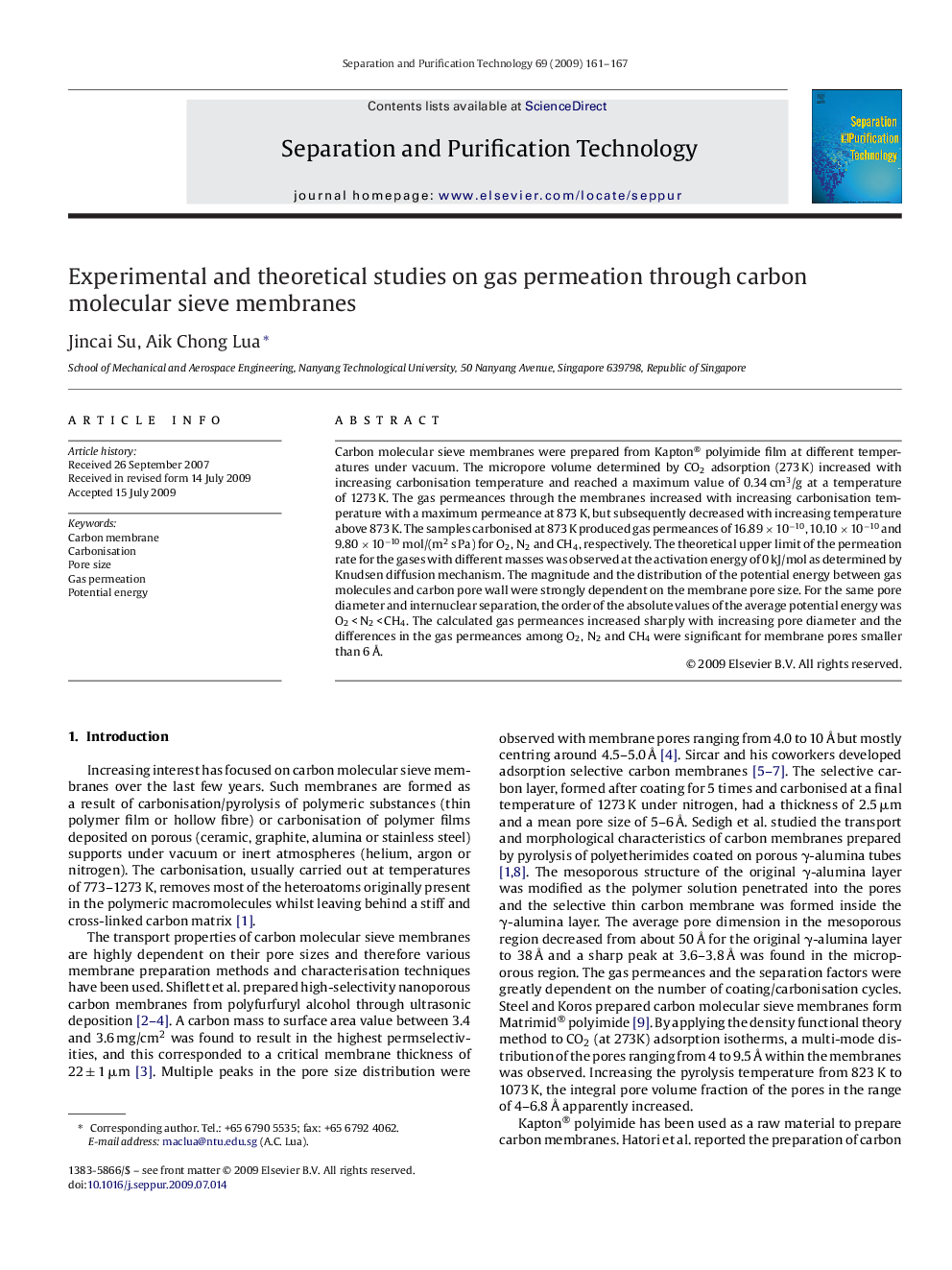| Article ID | Journal | Published Year | Pages | File Type |
|---|---|---|---|---|
| 643228 | Separation and Purification Technology | 2009 | 7 Pages |
Carbon molecular sieve membranes were prepared from Kapton® polyimide film at different temperatures under vacuum. The micropore volume determined by CO2 adsorption (273 K) increased with increasing carbonisation temperature and reached a maximum value of 0.34 cm3/g at a temperature of 1273 K. The gas permeances through the membranes increased with increasing carbonisation temperature with a maximum permeance at 873 K, but subsequently decreased with increasing temperature above 873 K. The samples carbonised at 873 K produced gas permeances of 16.89 × 10−10, 10.10 × 10−10 and 9.80 × 10−10 mol/(m2 s Pa) for O2, N2 and CH4, respectively. The theoretical upper limit of the permeation rate for the gases with different masses was observed at the activation energy of 0 kJ/mol as determined by Knudsen diffusion mechanism. The magnitude and the distribution of the potential energy between gas molecules and carbon pore wall were strongly dependent on the membrane pore size. For the same pore diameter and internuclear separation, the order of the absolute values of the average potential energy was O2 < N2 < CH4. The calculated gas permeances increased sharply with increasing pore diameter and the differences in the gas permeances among O2, N2 and CH4 were significant for membrane pores smaller than 6 Å.
